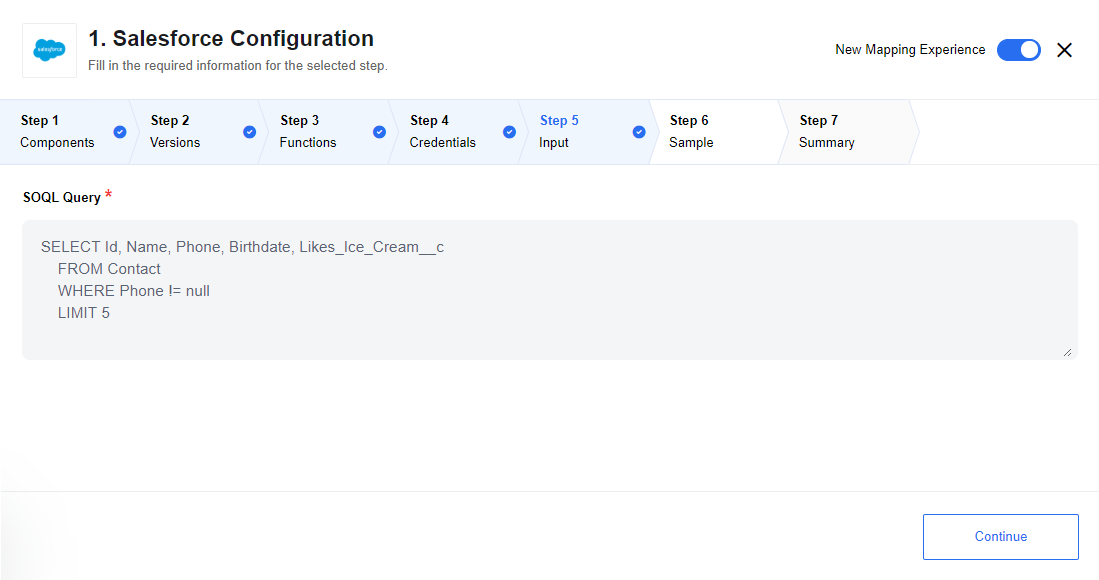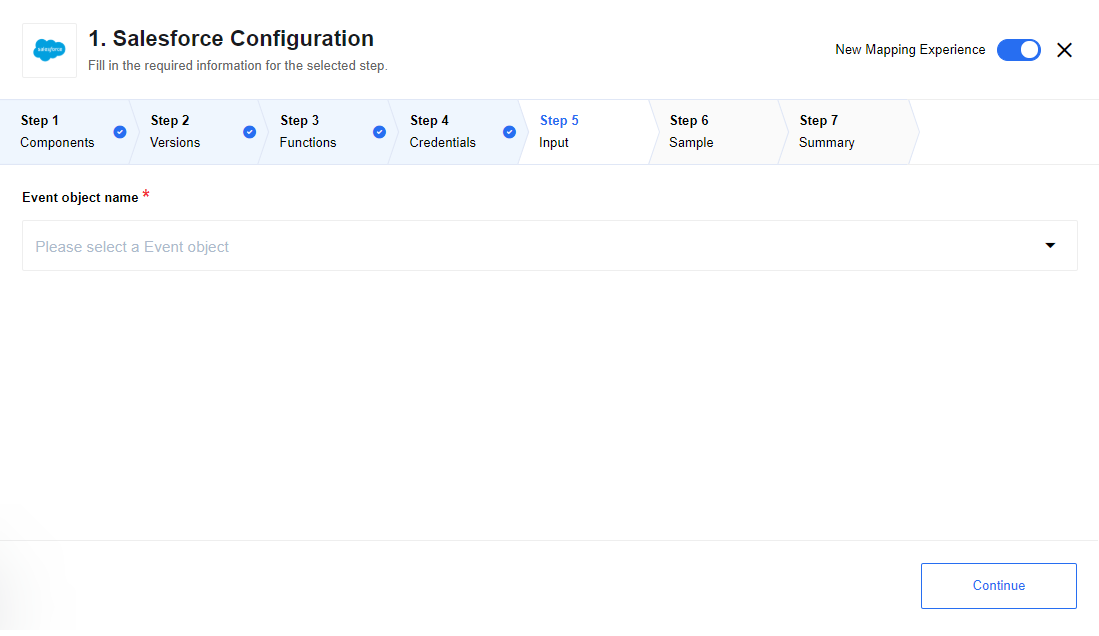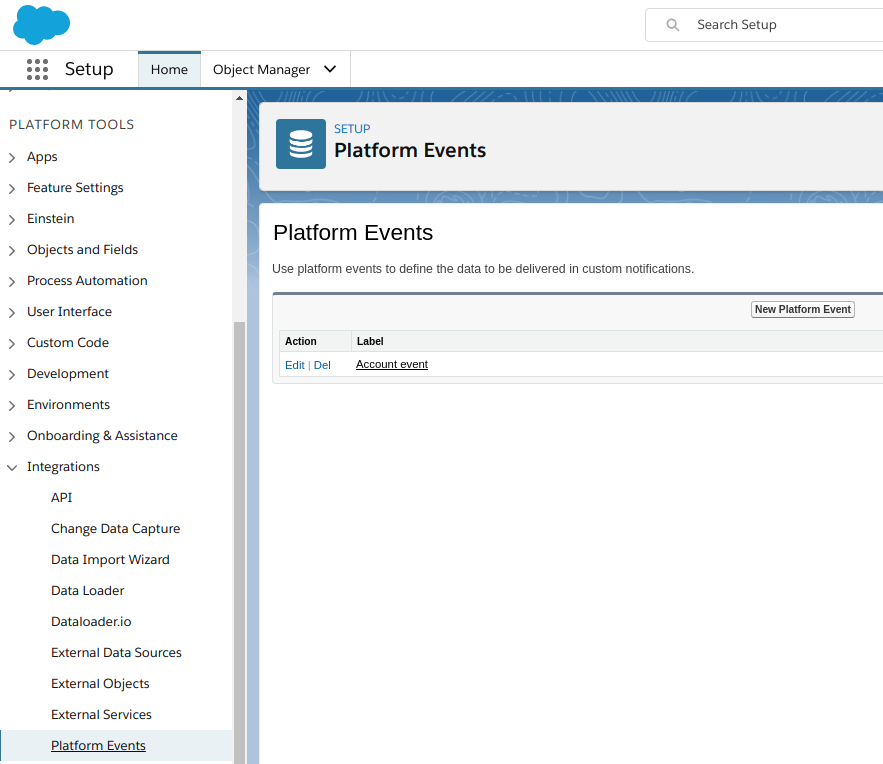Salesforce triggers
This page describes all triggers available in Integrations for the Salesforce component.
Get updated objects polling trigger
Polls existing and updated objects. You can select any custom or built-in object for your Salesforce instance.
Input field description
- Object type
-
Input field where from which to select the type of object updates to retrieve. For example,
Account. - Include linked objects
-
Multiselect dropdown list with all the related child and parent objects of the selected object type. List entries are given as
Object Name/Reference To (Relationship Name). Select one or more related objects, which will be join-queried and included in the response from your Salesforce Organization. Refer to the Limitations section below for use case advisories. - Emit behavior
-
Indicates emit objects individually or emit by page.
- Start Time
-
An optional string field. Indicates the beginning time to start retrieving events from in ISO 8601 Date time UTC format:
YYYY-MM-DDThh:mm:ssZ. - End Time
-
If provided, do not fetch records modified after this time in ISO 8601 Date time UTC format:
YYYY-MM-DDThh:mm:ssZ. - Size of Polling Page
-
Indicates the size of pages to be fetched. You can set this to a positive integer up to
10000, where the default is1000; - Process single page per execution
-
This checkbox means that if the number of changed records exceeds the maximum number of results in a page, wait until the next flow starts to fetch the next page instead of fetching it immediately.
Output metadata
- Fetch page
-
An object with key results that has an array as its value.
- Emit Individually
-
Each object fills the entire message.
Limitations
-
If records reach the value set in Size of polling page, the flow will find the largest update date and use it as the start time for the next iterations. Results with this date will be excluded from that iteration and included in the next.
-
If all records from one iteration will have same
LastModifiedDatethey will be processed, but all objects in the next iteration will start from a date strictly greater than this. To avoid this, use a higher Size of polling page value. -
When a binary field (primitive type base64; Documents, Attachments, for example) is selected on Include linked objects, an error will be thrown:
MALFORMED_QUERY: Binary fields cannot be selected in join queriesInstead of querying objects with binary fields as linked objects (such as child attachments), you should query them directly.
There is also a limit to the number of linked objects that you can query at once; beyond two or three, depending on the number of fields in the linked objects, Salesforce could potentially return a status code
431or414error, meaning the query is too long.Finally, due to a bug with multi-select dropdowns, it is recommended to deselect all of the elements in this field before you change your selection in the Object dropdown list.
Query trigger
A query trigger continuously runs the same Salesforce Object Query Language (SOQL) Query and generates results individually. Use SOQL to search your organization’s Salesforce data for specific information. SOQL is similar to the SELECT statement in the widely used Structured Query Language (SQL) but is designed specifically for Salesforce data. A trigger allows you to interact with your data using SOQL.
Configuration fields
- SOQL Query
-
Input field for your SOQL Query
- Output method
-
Dropdown list with the options:
- Emit all
-
All found records will be generated in one array
records, and - Emit individually
-
Each found object will be generated individually. This is an optional field that defaults to:
Emit individually.

Subscribe to platform events trigger
This trigger (which operates on realtime flows only) will subscribe for any platform Event using the Salesforce streaming API:

Input fields
- Event object name
-
Input field where you should select the type of platform event to which you want to subscribe. For example,
My platform event.
How to create new custom platform event entity

For more information, read Salesforce’s Platform Events Intro documentation.